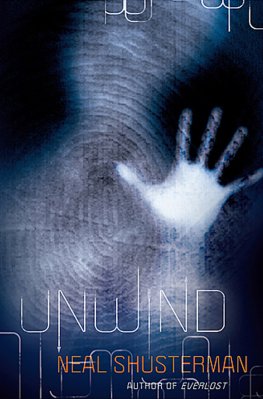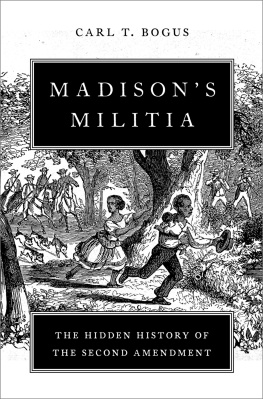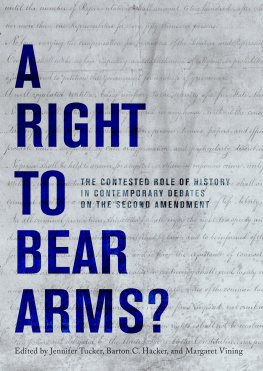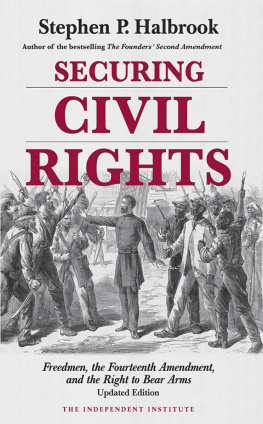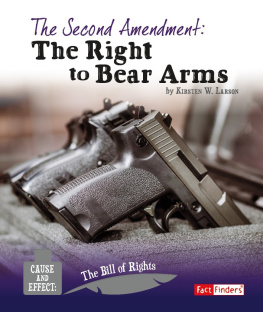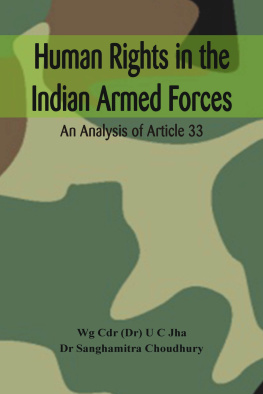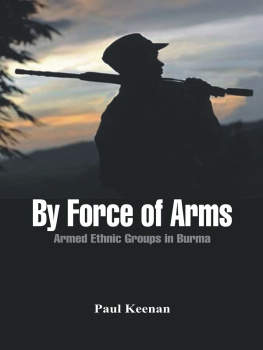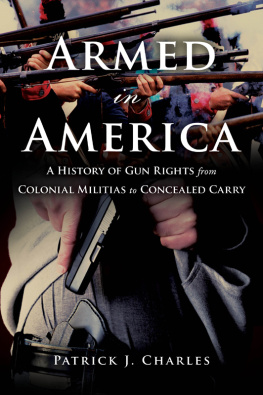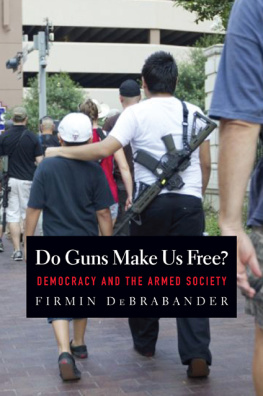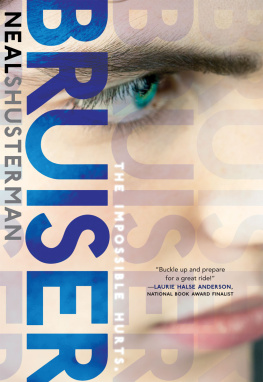Armed Citizens
Armed Citizens
The Road from Ancient Rome to the Second Amendment
Noah Shusterman
University of Virginia Press
Charlottesville and London
University of Virginia Press
2020 by the Rector and Visitors of the University of Virginia
All rights reserved
Printed in the United States of America on acid-free paper
First published 2020
ISBN 978-0-8139-4461-6 (hardcover)
ISBN 978-0-8139-4462-3 (ebook)
1 3 5 7 9 8 6 4 2
Library of Congress Cataloging-in-Publication Data is available for this title.
Cover art: The true portrait of his Excellancy George Washington Esqr. in the Roman Dress, John Norman, hand-colored etching and engraving, ca. 1783. (Mabel Brady Garvan Collection, Yale University Art Gallery)
Contents
D ECIDING MIDCAREER TO WRITE A BOOK on a subject outside of my training required seeking help from many peoplemore, even, than would your typical history book. I can thank only a small fraction of those who were kind enough to set aside their time so that they could share their knowledge with me. I have benefited from feedback from my colleagues, first at Temple University and then at the Chinese University of Hong Kong; the scholars at the McNeil Center for Early American Studies; and all of those who attended the talks I have given in Hong Kong and Philadelphia. I also want to thank the scores of students who have sat through my courses during this time, especially those who have taken my classes on the history of militias and had to follow me down more than a few rabbit holes.
To list just a few people specifically, Id like to mention Philadelphians Daniel Richter and Audra Wolfe, who gave me advice from their own areas of expertise in which I was sorely lacking; and fellow Hong Kongers Jeremy Yellen, Elizabeth Ho Pui-yin, and Bryan Mercurio. Id also like to thank my fellow historians of the French Revolution, including Malcolm Crook and Micah Alpaugh, along with John Abromeit, all of whom gave me feedback on the parallel projects Ive been working on yet whose insights worked their way into this one as well. Stuart Semmel, James Morton, and Stuart McManus all read chapters of this book and provided invaluable feedback. I also want to thank everyone Ive worked with at the University of Virginia Press, especially Angie Hogan, Ellen Satrom, and George Roupe.
While writing this book, I took full advantage of the new digital world. Without the scores of podcasts and e-courses I listened to and the insights and feedback I received from the friends I have made among twitterstorians and other gun scholarship tweeters, it would have taken me far longer to learn everything that went into writing this book.
I do want to give special thanks to two friends in Philadelphia. First, David Waldstreicher, who encouraged me to pursue this project back when we were both at Temple and has helped me with it ever since. Second, Bill Hangley, who read over the first draft of the book and helped me bring an unwieldy collection of stories into a coherent whole.
Moving to Hong Kong turned out to be one of the great experiences of my life. Seeing the changes there during the production phase of this book was both inspiring and heartbreaking. The people of Hong Kong have taken on a far greater burden than the world should ever have asked of them. Add oil, heung gong yan. Add oil.
No one has helped me more than my wife, Helen, and our son, Zachary. They make my life make sense when the rest of the world doesnt. Our familiesboth immediate and extendedhave also been a continued source of support both in Hong Kong and in the United States. Finally, this book is dedicated to my mother, Jill Michaels. When we were growing up, she made sure that my sister and I knew that a life devoted to the fight for justice and equality was a life well spent.
Armed Citizens
The Long Road to the Second Amendment
T HE S ECOND Amendment to the US Constitution no longer makes sense.
It no longer makes sense not because todays weapons are more powerful or because American gun violence is out of control (although both of those statements are true). The Second Amendment no longer makes sense in a much more basic way: people no longer understand what it means. Nor do they understand what it meant to the generation that created it. The first half of the amendmentA well regulated militia, being necessary to the security of a free statehas become a cryptic phrase, waving at us across the centuries.
The amendments second half still makes sense. The right of the people to keep and bear arms, shall not be infringed. Some Americans like that phrase more than others, but everyone understands what the words mean. In 1791, though, when the states ratified the Bill of Rights, the entire amendment made sense. Contemporaries understood what the framers of the Constitution meant by a militia, and they knew how important it was that those militias be regulated. And they knew why, for eighteenth-century republicans, a state without such a militia could never be truly free.
They knew about militias because Britains North American colonies had militias. Of the thirteen colonies that fought for their independence, all but one had maintained a militia since their founding. As a result, the militia was a familiar institution to the inhabitants of the United States. These were not the voluntary associations that call themselves militias todayfar from it. The colonial militias were official institutions, governedsometimes effectively, sometimes less soby colonial laws and regulations that required most citizens to participate. As a result, those citizens were accustomed to mandatory militia service of one sort or another. (Most of the people who lived in the colonies were not citizensmore on that below.) Since the 1607 arrival of English colonists in what would become Jamestown, Virginia, settlers had been expected to provide their own security. The Jamestown colonists were responsible for planting their own crops and fighting their own battles. And as Virginia grew, that remained true. The other colonies developed along mostly similar lines, with citizens required to participate in the militia and with relatively few professional soldiers.
What, then, were these colonial militias? They were official military forces under the command of the colonial government and acting on its behalf. Their duties included both internal and external mattersin other words, they could act either as an army or as an internal police force. Such overlap in tasks was not unusual at the time: in Europe, which had a much larger population, the distinction between soldiers and police officers was only just emerging in the eighteenth century. What differentiated a militia from other armed forces was that its members were only part-time soldiers. They had careers to attend to, homes to maintain, and, ideally, families to lead. These militias had their own lines of command, as in the army, though in many colonies the officers were elected by the militiamen themselves. Peacetime duties were relatively light: the men would muster on several Sundays over the course of the year. Sometimes these musters were serious affairs with rigorous training and exercises. At other times, musters were little more than excuses for gathering and drinking. When colonists decided the situation demanded it, these militias sprang into actionwhich, again, amounted to the colonists looking after their own military needs. For most of the colonies existence, the militias were not just the colonies first line of defense but their only one.


